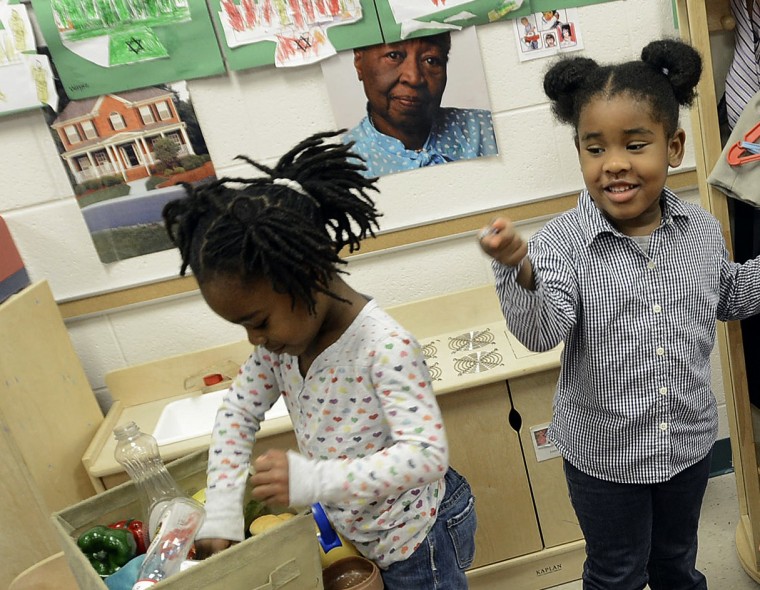The impact of the across-the-board spending cuts known as “the sequester” hurts both our economy and our communities. Congress came together for an uncommonly quick and bipartisan budget fix for air traffic controllers, yet nothing has been done to replace damaging cuts to education, emergency responders or Head Start. For those who may not have as big a megaphone, these across-the-board cuts are still taking their toll.
The sequester is getting a lot of attention–and none of it is good. This is budgeting at its worst.
There is a better way to make budget decisions, and a bipartisan road map we can follow.
By investing in “what works”–programs that are successful and have the evidence and data to prove it–we can move from blind cuts to smart choices, and begin to change lives for the better. We can substantially improve the lives of young people and their families by investing in programs that demonstrate they are successful and begin to shift funds away from those programs that are falling short.
Instead of spending money and not evaluating its effectiveness, or cutting funding in ways that hurt everyone, we should prioritize solutions that are effective and can demonstrate their impact with evidence and data. Communities across the country, foundations, private companies, and even the federal government are already using evidence to improve outcomes. By increasing the use of evidence, we can improve communities and give taxpayers a better return on their investment and we can also begin to restore trust in a government that is now better known for the things it can’t do, rather than the things it can.
Some programs, with a history of bipartisan support, are setting an example for evidence-based budgeting. Head Start, likely to be hit hard by the sequester, has served more nearly 30 million children under five for more than 45 years. The overwhelming weight of evidence suggests that early-childhood intervention of this kind works in the near- and long-term to improve lives. In 2007, a Democratic Congress and a Republican president came together to amend the Head Start Act to mandate that certain grants be “re-competed.” This re-competition, implemented to ensure the quality of programs, diverts funds away from low performing grantees and direct funds toward other providers, in the same local area, in order to achieve better results.
Under this policy, grantees are awarded five years of funding, after which there is a period of evaluation where they will be assessed for their effectiveness in achieving school readiness. The first round began last August, and we could see the results this summer. Through this process, the Department of Health and Human Services can identify what’s working for our youngest children and improve results in communities, and eventually, nationwide. This program will identify the strongest programs, encourage those who are failing to get better and ultimately will better prepare children for academic success.
In 2007, we achieved bipartisan progress when focusing on evidence and impact. We must build on this momentum in 2013. Mayors, governors and local leaders of both parties have taken steps to focus public dollars more on results, and now Washington is starting to as well. Senators from both parties have recently called for a stronger focus on data and results. Senators Ron Wyden and Debbie Stabenow inserted evidence language into the Senate Democratic Budget. Republican Senator Rob Portman said recently that “this is an area ripe for bipartisanship,” and that decisions should “be informed by more evidence,” and Senator Mary Landrieu has championed making the federal government more effective and efficient.
In his Fiscal Year 2014 Budget, unveiled last month, President Barack Obama builds on his first term progress to implement a stronger evidence base at the federal level and on the work done by his predecessor, President George W. Bush. President Obama’s budget includes an unprecedented focus on improving access to data and increasing the use of evidence in making funding decisions. He expands innovation funds, Pay for Success initiatives, increases resources for evaluations and takes important steps toward using evidence in directing formula grant dollars and creating “what works” clearinghouses in federal agencies. He also strengthens existing results-based programs to better prepare students, train workers, and improve schools.
Travelers shouldn’t have to deal with flight delays–nor should pre-schoolers be turned away from Head Start because of bad budget choices. By embracing evidence and investing in what works, we can make smarter decisions on where to spend and what to cut, instead of focusing on who we have to hurt to balance the budget.
Michele Jolin is Managing Partner at America Achieves, leading the Results for America initiative and a Senior Fellow at the Center for American Progress. She is a former Senior Advisor for Social Innovation at the White House, where she designed and launched the Social Innovation Fund.
